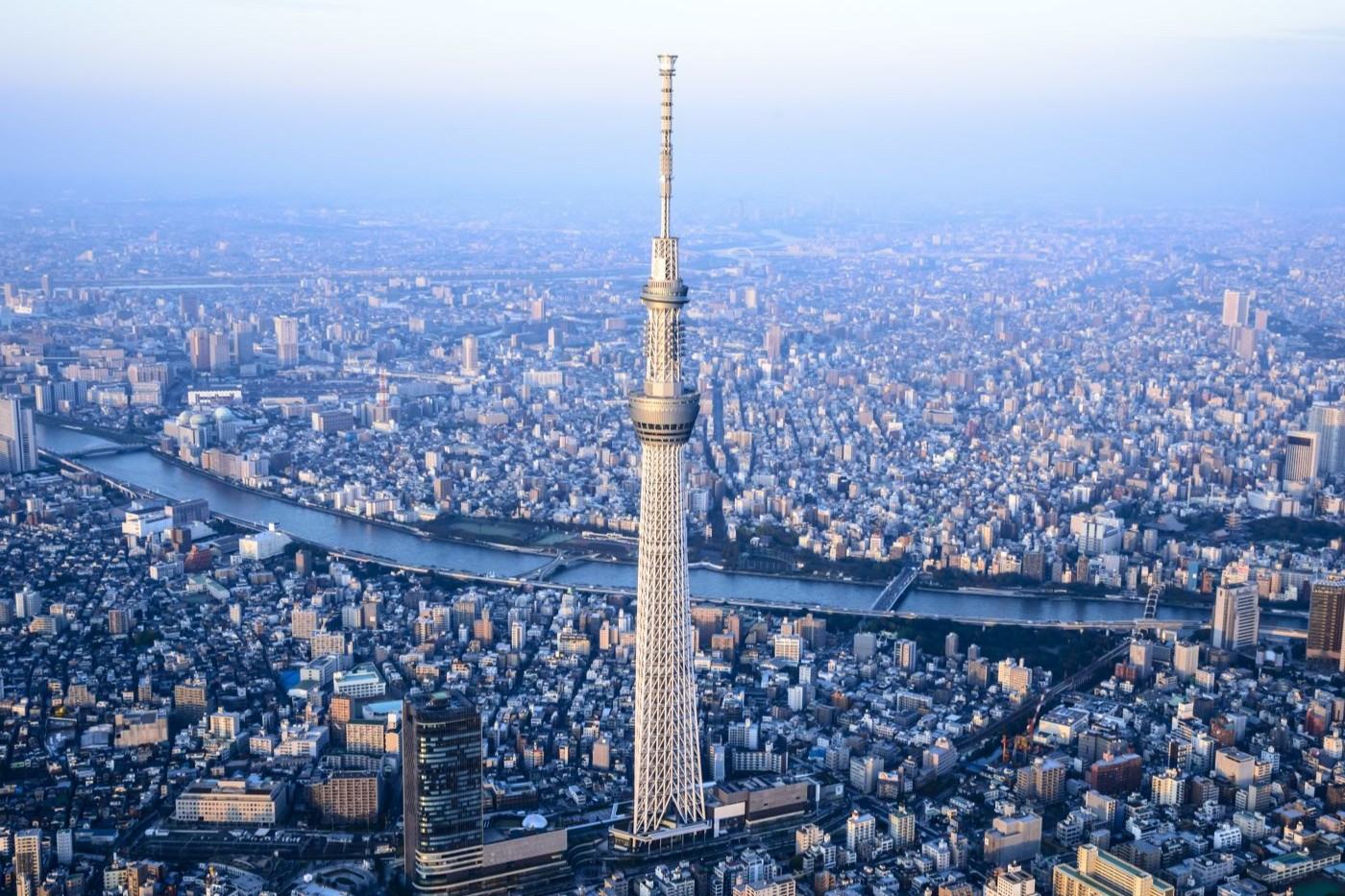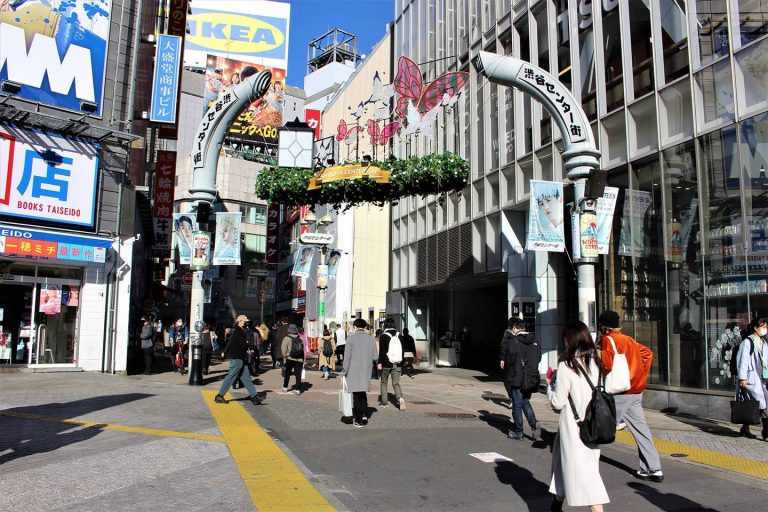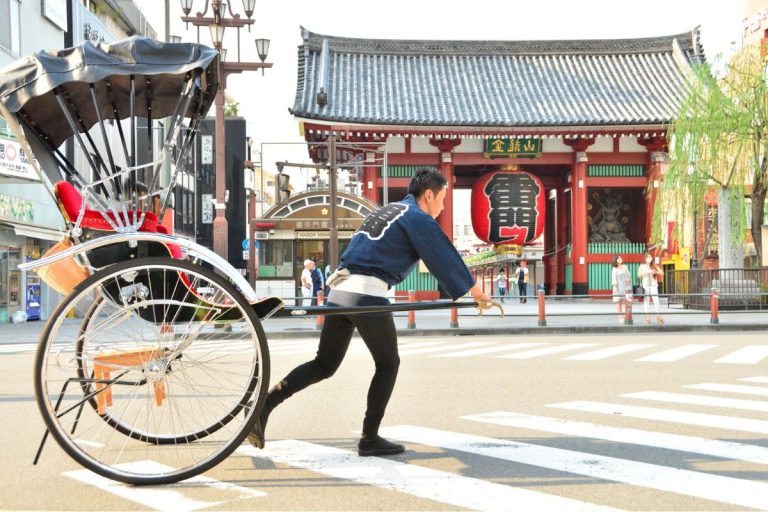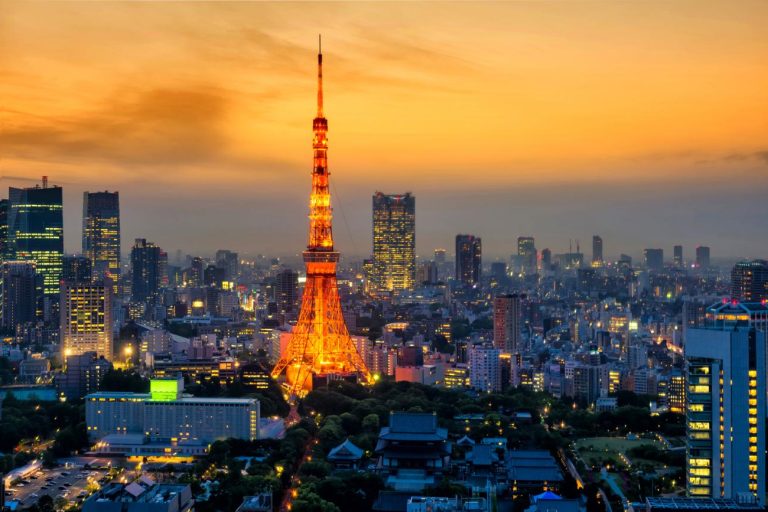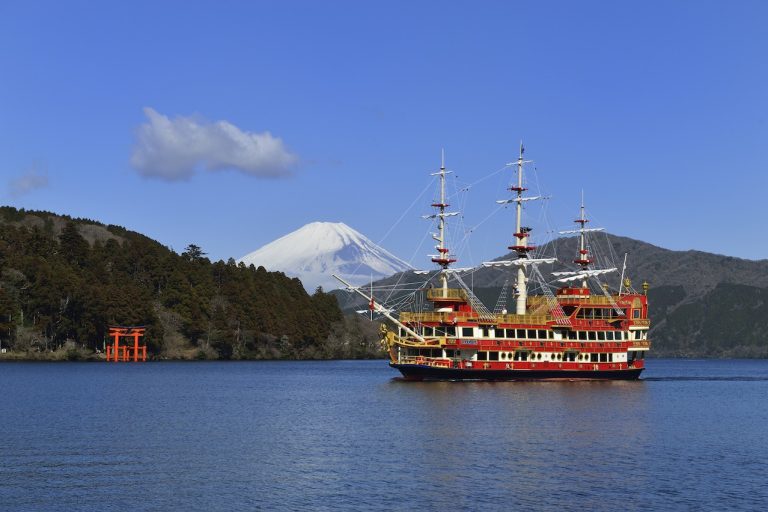Exploring the Route from Asakusa to Tokyo Skytree
The walking route from Asakusa to Tokyo Skytree offers one of Tokyo’s most captivating cultural transitions, taking visitors on a journey through centuries of Japanese history in just a few kilometers. This scenic path connects the traditional heart of old Edo with the modern marvel that defines Tokyo’s contemporary skyline. The entire walk typically takes 30 to 45 minutes at a leisurely pace, allowing plenty of time to absorb the changing atmosphere as you move from ancient temple grounds to cutting-edge architecture.
What makes this route particularly special is how it showcases Tokyo’s remarkable ability to blend old and new seamlessly. You’ll witness the gradual transformation from narrow traditional streets lined with century-old shops to wide modern boulevards leading to one of the world’s tallest towers. The path follows the gentle curves of the Sumida River, providing constant visual interest and numerous photo opportunities along the way.
Overview of the Walking Tour
This self-guided walking tour covers approximately 1.5 kilometers of diverse terrain, starting from the bustling temple complex of Sensoji and ending at the base of Tokyo Skytree. The route is completely flat and suitable for visitors of all ages and fitness levels. Along the way, you’ll pass through several distinct neighborhoods, each with its own character and attractions. The path is well-marked with bilingual signage, making navigation straightforward even for first-time visitors to Tokyo.
Starting Point: Sensoji Temple
Sensoji Temple serves as the perfect launching point for this cultural journey, representing Tokyo’s oldest Buddhist temple dating back to 628 AD. The temple complex buzzes with activity throughout the day, from early morning prayers to evening illuminations. Visitors can participate in traditional rituals like drawing omikuji fortune papers or burning incense for good luck before beginning their walk toward the modern world.
Scenic Views Along the Sumida River
The Sumida River provides a constant companion throughout much of the walk, offering peaceful water views that contrast beautifully with the urban surroundings. Traditional yakatabune pleasure boats drift lazily along the water, while modern water buses ferry passengers between various Tokyo attractions. The riverbank path features well-maintained walkways with benches strategically placed for rest and contemplation of the changing cityscape.
Key Attractions in Sumida Park
Sumida Park stretches along both sides of the river, providing green space and recreational opportunities in the heart of the city. The park features numerous sculptures, playgrounds, and exercise equipment, making it popular with both tourists and locals. During different seasons, the park takes on distinct personalities, from cherry blossom celebrations in spring to summer festivals and autumn leaf viewing.
Crossing Kototoi Bridge
Kototoi Bridge marks a significant milestone in the journey, offering elevated views of both your starting point and destination. The bridge’s distinctive architecture reflects traditional Japanese design elements while serving modern transportation needs. From this vantage point, photographers can capture stunning shots that include both Sensoji Temple’s pagoda and Tokyo Skytree in a single frame.
Attractions Along the Sumida River
The Sumida River corridor serves as Tokyo’s historical lifeline, connecting the city’s past with its future through a series of parks, bridges, and cultural sites. This waterway has witnessed the evolution of Tokyo from a small fishing village to a global metropolis, and today it continues to play a vital role in the city’s transportation network and recreational activities. The river’s banks have been carefully developed to provide public access while preserving the natural beauty that has inspired artists and poets for generations.
Modern development along the river has been thoughtfully planned to enhance rather than detract from the natural environment. Wide pedestrian paths, cycling lanes, and green spaces create an urban oasis that provides respite from the busy city streets. The river itself has been cleaned and maintained to support various forms of wildlife, making it a surprisingly biodiverse corridor through one of the world’s largest cities.
Historical Significance of the Sumida River
The Sumida River has served as Tokyo’s primary transportation artery for over a thousand years, facilitating trade and cultural exchange that shaped the city’s development. During the Edo period, the river was lined with warehouses, markets, and entertainment districts that catered to merchants and travelers. Many of the traditional festivals and celebrations that continue today originated along these banks, where communities gathered to celebrate seasonal changes and religious observances.
Cherry Blossom Viewing Spots
Spring transforms the Sumida River into one of Tokyo’s premier hanami destinations, with over a thousand cherry trees creating a pink canopy along the water’s edge. The best viewing spots are concentrated in Sumida Park, where families and friends gather for traditional picnics beneath the blossoms. Early morning visits offer the most peaceful experience, while evening illuminations create a magical atmosphere that extends the viewing hours well into the night.
Fireworks Festivals at Sumida Park
Summer brings the spectacular Sumida River Fireworks Festival, one of Tokyo’s oldest and most prestigious pyrotechnic displays dating back to the 18th century. The festival attracts nearly one million spectators who gather along the riverbanks to witness the elaborate show. The area around Sumida Park provides some of the best viewing positions, though visitors should arrive early to secure prime spots for this beloved annual tradition.
Water Activities at Oyokogawa Shinsui Park
Oyokogawa Shinsui Park offers unique water-based recreational opportunities in the heart of urban Tokyo, featuring restored waterways that once served the city’s transportation needs. Children can safely play in shallow water features during summer months, while walking paths wind through carefully landscaped gardens that showcase native plants and seasonal flowers. The park demonstrates Tokyo’s commitment to environmental restoration and provides educational opportunities about urban water management.
Visiting Tokyo Skytree
Tokyo Skytree stands as the world’s second-tallest structure and Japan’s most recognizable modern landmark, rising 634 meters above the traditional neighborhoods of eastern Tokyo. Since opening in 2012, this broadcasting tower has redefined the city’s skyline while serving practical functions for television and radio transmission throughout the Kanto region. The tower’s unique design incorporates traditional Japanese architectural elements, creating a structure that honors the past while embracing cutting-edge engineering and technology.
The tower complex extends far beyond the observation decks, encompassing a comprehensive entertainment and shopping destination known as Tokyo Skytree Town. This development includes an aquarium, planetarium, and numerous restaurants representing cuisines from around the world. The complex operates with extended hours, typically from 9:00 am to 10:00 pm, with last admission at 9:00 pm, allowing visitors flexibility in planning their visit around other Tokyo activities.
Overview of Tokyo Skytree
Tokyo Skytree’s distinctive silhouette draws inspiration from traditional Japanese pagodas, with a triangular base that gradually transitions to a circular cross-section as it rises. The tower’s color changes subtly throughout the day, appearing silver-white in daylight and taking on warm LED illumination after dark. Advanced engineering allows the structure to withstand earthquakes and high winds while maintaining broadcasting capabilities that serve millions of households across eastern Japan.
Observation Decks: Tembo Deck and Tembo Galleria
The Tembo Deck at 350 meters provides panoramic views across Tokyo, with digital displays helping visitors identify landmarks and neighborhoods spread across the vast metropolitan area. On clear days, Mount Fuji becomes visible in the distance, creating photo opportunities that capture Japan’s most sacred mountain alongside its most modern cityscape. The Tembo Galleria at 450 meters offers an even more elevated perspective, featuring a spiraling walkway that provides 360-degree views as visitors ascend through the tower’s upper levels.
Photogenic Spots at Tokyo Skytree
Professional photography services are available at multiple levels within the tower, allowing visitors to capture high-quality images with Tokyo’s skyline as a backdrop. The glass floors at various observation points create dramatic photo opportunities for those comfortable with heights. Seasonal decorations and special lighting effects throughout the year provide unique photo opportunities that reflect Japanese cultural celebrations and international events.
Dining Options at Tokyo Skytree
The restaurant on the 345th floor offers fine dining with unparalleled views, though advance reservations are strongly recommended due to limited seating and high demand. Multiple cafes throughout the tower provide lighter meal options and beverages, allowing visitors to extend their stay while enjoying the changing views as daylight transitions to evening illumination. The dining facilities accommodate various dietary preferences and offer both Japanese and international cuisine options.
Cultural Experiences in Asakusa
Asakusa preserves the authentic atmosphere of old Tokyo through its narrow streets, traditional shops, and time-honored customs that have survived centuries of urban development. This historic district serves as a living museum where visitors can experience traditional Japanese culture through hands-on activities, local crafts, and seasonal festivals that maintain connections to Japan’s cultural heritage. The area’s commitment to preserving traditional ways of life creates an immersive experience that transports visitors back to the Edo period.
Local artisans continue to practice traditional crafts using techniques passed down through generations, creating unique souvenirs and artwork that reflect the district’s cultural significance. Many shops have operated continuously for over a century, maintaining family traditions while adapting to serve modern tourists seeking authentic Japanese experiences. For those traveling from other parts of Tokyo, the Asakusa to Ueno local shuttle provides convenient connections to additional cultural sites in the area.
Rickshaw Rides for Historical Insight
Traditional rickshaw rides provide personalized tours through Asakusa’s historic streets, with knowledgeable guides sharing stories and historical details that bring the neighborhood’s past to life. These human-powered vehicles offer a unique perspective on the area’s architecture and culture while supporting a traditional form of transportation that has served Tokyo for over a century. The rickshaw pullers often speak multiple languages and can customize routes based on visitors’ interests and time constraints.
Local Crafts and Souvenirs
Asakusa’s traditional craft shops offer authentic Japanese goods ranging from handmade fans and wooden combs to traditional sweets and ceremonial items. Many of these shops have been family-owned for generations, maintaining quality standards and traditional production methods that create truly unique products. Visitors can often observe artisans at work, gaining insight into the skill and patience required to master these traditional crafts.
Events and Festivals in Asakusa
Throughout the year, Asakusa hosts numerous festivals and cultural events that showcase traditional Japanese performing arts, seasonal celebrations, and religious observances. The famous Sanja Matsuri in May attracts millions of visitors who come to witness one of Tokyo’s most energetic traditional festivals. These events provide opportunities to experience Japanese culture in its most authentic form, with local residents actively participating in celebrations that have continued for centuries.
Operational Information for Tokyo Skytree
Tokyo Skytree operates with consistent hours and pricing structures designed to accommodate the millions of visitors who arrive throughout the year from around the world. The facility maintains detailed operational schedules that account for seasonal variations, special events, and maintenance requirements while maximizing accessibility for international tourists. Current operations run from 9:00 am to 10:00 pm, with final admission at 9:00 pm, providing ample opportunity for both daytime and evening visits that showcase Tokyo’s transformation from day to night.
Ticketing systems have been streamlined to reduce wait times and improve the visitor experience, with multiple purchase options including advance online sales, same-day purchases, and fast-track options for those willing to pay premium prices. The facility strongly advises visitors to purchase tickets through official channels only, as fraudulent websites and social media accounts have been identified attempting to scam tourists with fake tickets and misleading information.
Visiting Hours and Ticket Information
Standard admission tickets provide access to the Tembo Deck at 350 meters, while separate tickets are required for the higher Tembo Galleria at 450 meters. Ticket prices vary based on age, with discounts available for children, seniors, and visitors with disabilities. Same-day tickets can be purchased without waiting in lines, though advance purchase options offer savings of up to ¥400 when bought the day before the visit.
Discounts and Special Offers
Various promotional offers throughout the year provide additional savings for visitors, including seasonal campaigns, group discounts, and combination tickets that include access to other Tokyo Skytree Town facilities. Special rates are available for students, seniors, and visitors with disabilities, with proper identification required to qualify for reduced pricing. Some credit card companies and travel agencies offer exclusive discounts to their members.
Access Information and Transportation Options
Tokyo Skytree is easily accessible via two nearby stations: Tokyo Skytree Station and Oshiage Station, both served by multiple train lines that connect to major transportation hubs throughout Tokyo. The tower complex provides clear signage and multilingual information to help international visitors navigate from the stations to the tower entrance. For those coming from other parts of the city, various bus routes including services to areas like Shibuya to Roppongi provide alternative transportation options.
Dining and Shopping at Tokyo Skytree
Tokyo Skytree Town encompasses a comprehensive shopping and dining destination that extends the tower experience far beyond the observation decks themselves. This commercial complex houses over 300 shops and restaurants spread across multiple floors, offering everything from traditional Japanese goods to international brands and cuisine. The shopping areas are designed to accommodate visitors spending several hours exploring, with rest areas, information desks, and services that cater to international tourists’ needs.
The dining options range from casual food courts to upscale restaurants, ensuring that visitors can find appropriate meals regardless of budget or dietary preferences. Many establishments offer views of the tower itself, creating unique dining experiences where the landmark becomes part of the meal’s ambiance. The complex operates with extended hours that complement the tower’s schedule, allowing visitors to combine sightseeing with shopping and dining in a single location.
Shopping within Tokyo Skytree Town
The Solamachi shopping complex features a diverse mix of retailers, from traditional Japanese craft shops to modern fashion boutiques and electronics stores. International brands are well-represented alongside local Japanese companies, creating a shopping environment that appeals to both domestic and international visitors. The layout is designed for easy navigation, with clear signage and maps available in multiple languages.
Restaurant Reservations and Options
Dining reservations are strongly recommended for the tower’s premium restaurants, particularly the establishment on the 345th floor, which offers fine dining with panoramic Tokyo views. Multiple cuisine types are available throughout the complex, including traditional Japanese, Italian, French, and fusion restaurants that cater to various tastes and budgets. Food courts provide quicker, more casual dining options for visitors with limited time.
Original Merchandise Available
Tokyo Skytree’s official merchandise includes unique items that can only be purchased at the tower complex, ranging from miniature tower replicas to specially designed clothing and accessories. Limited edition items tied to seasonal events and special collaborations provide collectible options for visitors seeking unique souvenirs. The merchandise shops are strategically located throughout the complex, allowing visitors to browse and purchase items at various points during their visit.
Events and Collaborations at Tokyo Skytree
Tokyo Skytree regularly hosts special events and collaborations that enhance the visitor experience while celebrating both Japanese culture and international partnerships. These events range from seasonal illuminations and cultural festivals to partnerships with popular entertainment franchises that attract fans from around the world. The tower’s management actively seeks opportunities to create unique experiences that encourage repeat visits and provide fresh perspectives on this iconic landmark.
Recent collaborations have included partnerships with popular anime series, international cultural exchanges, and seasonal celebrations that transform the tower’s appearance and atmosphere. These events often include special merchandise, limited-time dining options, and exclusive access opportunities that create memorable experiences for participants. The tower’s social media channels and official website provide regular updates about upcoming events and special offers.
Special Events and Festivals
Seasonal events throughout the year celebrate traditional Japanese holidays and international observances, often featuring special lighting displays that transform the tower’s nighttime appearance. Summer fireworks festivals provide spectacular viewing opportunities from the observation decks, while winter illuminations create magical atmospheres that attract photographers and couples seeking romantic experiences. These events often include cultural performances and educational activities that enhance understanding of Japanese traditions.
Collaborations with Popular Culture
Partnership events with popular anime, manga, and entertainment franchises create themed experiences that appeal to fans of Japanese pop culture. Recent collaborations have included ‘Toy Story’ and ‘Detective Conan’ themed events that feature special decorations, exclusive merchandise, and interactive experiences. These partnerships often extend throughout the Tokyo Skytree Town complex, creating immersive environments that celebrate both the landmark and the featured entertainment properties.
Promotional Activities and Updates
Regular promotional campaigns offer special pricing, exclusive access, and unique experiences designed to attract both first-time visitors and repeat guests. The tower’s management maintains active social media presence and official communication channels that provide timely updates about operational changes, special offers, and upcoming events. Visitors are encouraged to check official sources for the most current information, as promotional activities and special events can significantly enhance the overall experience.
Practical Tips for Visitors
Successful visits to Tokyo Skytree require some advance planning and awareness of common challenges that can affect the overall experience. Understanding peak visiting times, weather considerations, and facility policies helps ensure that your visit meets expectations while avoiding common pitfalls that can detract from this iconic Tokyo experience. The tower’s popularity means that certain times of day and seasons can be significantly more crowded than others, making timing an important consideration for visit planning.
Accessibility features throughout the complex accommodate visitors with various physical needs, while multilingual services help international guests navigate the facilities and maximize their experience. The tower’s staff are trained to assist international visitors and can provide guidance on everything from ticket options to dining recommendations based on individual preferences and constraints.
Avoiding Fake Websites and Scams
Official Tokyo Skytree tickets should only be purchased through authorized channels, as fraudulent websites and social media accounts have been identified attempting to deceive tourists with fake tickets and misleading information. The official website clearly identifies authorized ticket sellers and warns against suspicious online offers that seem too good to be true. Visitors should verify website authenticity and avoid purchasing tickets from unofficial sources that may not provide valid admission.
Best Times to Visit
Early morning visits typically offer the clearest views and smallest crowds, while sunset timing provides opportunities to experience both daylight and nighttime illumination from the observation decks. Weekdays generally have fewer visitors than weekends, though this varies significantly during Japanese holiday periods and international tourist seasons. Weather conditions greatly affect visibility, with clear days offering the best opportunities to see Mount Fuji and other distant landmarks.
Accessibility Options for Visitors
Tokyo Skytree provides comprehensive accessibility features including wheelchair-accessible entrances, elevators, and observation areas that accommodate visitors with mobility challenges. Audio guides and visual aids are available in multiple languages to assist visitors with hearing or vision impairments. Staff members are trained to provide assistance and can arrange special accommodations when notified in advance of specific needs or requirements.
Frequently Asked Questions
How long does the walk from Asakusa to Tokyo Skytree take?
The walk typically takes 30 to 45 minutes at a leisurely pace.
What are some attractions along the route?
Key attractions include Sensoji Temple, Sumida Park, and Kototoi Bridge.
What are the visiting hours for Tokyo Skytree?
Tokyo Skytree operates from 9:00 am to 10:00 pm, with last admission at 9:00 pm.
Are there dining options available at Tokyo Skytree?
Yes, Tokyo Skytree offers a range of dining options, including fine dining and casual eateries.
What should visitors be aware of regarding ticket purchases?
Visitors should only purchase tickets through official channels to avoid scams or fraudulent websites.
Embarking on a Cultural Journey
Walking from Asakusa to Tokyo Skytree offers a unique opportunity to experience the harmonious blend of Tokyo’s historical and modern landscapes. This journey not only showcases the city’s rich cultural heritage but also highlights its dynamic evolution, making it a must-do for anyone looking to understand the essence of Tokyo.
